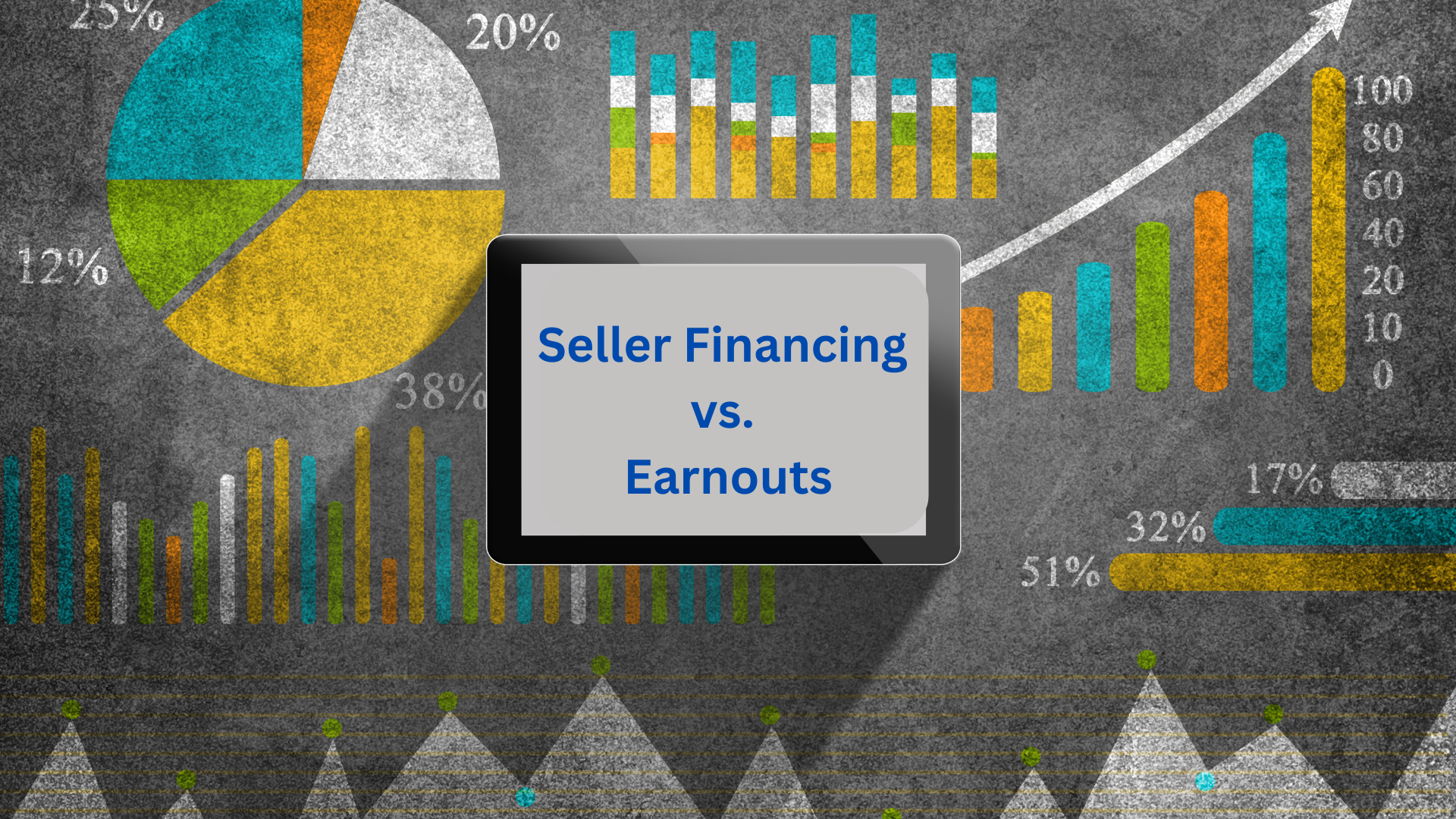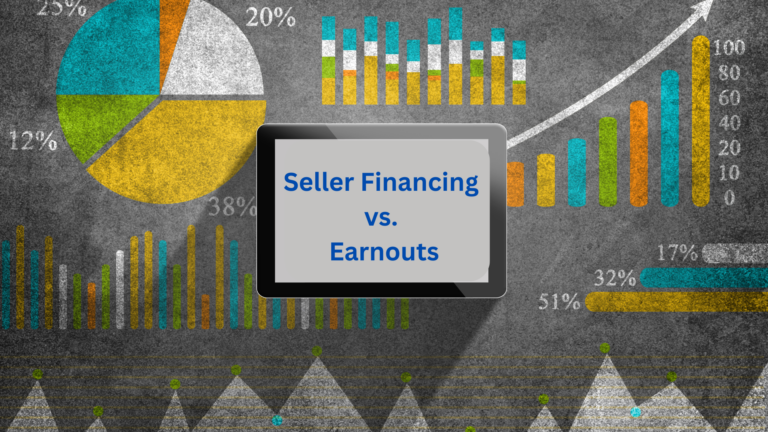In today’s dynamic business environment, deal flexibility is paramount. Whether buying or selling a business, structuring transactions that adapt to evolving circumstances is crucial. This newsletter explores two powerful tools to achieve this: seller financing and earnouts.
Traditional deal structures, often reliant solely on upfront cash, can limit opportunities and introduce unnecessary risk. By strategically incorporating seller financing and earnouts, buyers and sellers can bridge valuation gaps, manage risk effectively, and align long-term interests.
Seller Financing: A Mutually Beneficial Strategy
Seller financing occurs when the seller extends a loan to the buyer for a portion of the purchase price, repaid over time with interest. This structure enables deals to proceed, particularly when traditional financing is unavailable or insufficient.
Key Features:
- Seller as Lender: The seller directly provides financing.
- Interest-Bearing Payments: Payments are structured with agreed-upon interest rates.
- Security Provisions: Measures are put in place to protect the seller from buyer default.
- Down Payment: Typically required, with the percentage varying based on seller preference and buyer financial capacity. Common ranges are 10-20%, with some sellers accepting 50-75%.
- Financial Due Diligence: The seller should conduct a thorough assessment of the buyer’s financial stability.
Benefits for Buyers:
- Reduced Upfront Capital: Lowers initial cash outlay, preserving capital for operational needs.
- Enhanced Financing Access: Especially beneficial when traditional lenders are hesitant.
- Demonstrated Seller Confidence: Signifies the seller’s belief in the business’s future.
Benefits for Sellers:
- Potential for Increased Sale Price: Achieves a higher overall return through interest income.
- Tax Optimization: Spreads capital gains tax liability over time.
- Consistent Income Stream: Provides a predictable flow of income.
Risks to Consider:
⚠ For Buyers: obligation to meet payments, even if the business underperforms.
⚠ For Sellers: risk of buyer default, making security provisions crucial.
Earnouts: Aligning Incentives and Mitigating Risk
An earnout is a portion of the purchase price contingent on the business achieving specific financial targets post-sale. This structure effectively bridges valuation discrepancies and aligns buyer and seller incentives.
Key Features:
- Performance-Based Payments: Payments are tied to achieving benchmarks such as revenue targets, EBITDA, or other KPIs.
- Defined Payment Structure: Typically paid over 1-3 years post-closing, based on business performance.
- Caps and Limitations: Often includes a maximum payout cap and a defined earnout period.
- Performance Triggers: Payments are triggered only upon achieving predetermined performance targets.
Benefits for Buyers:
- Reduced Initial Risk: Lowers upfront costs, with additional payments tied to performance.
- Alignment of Interests: Ensures the seller remains invested in the business’s success during transition.
- Bridges Valuation Gaps: Helps settle disagreements over the business’s future value.
Benefits for Sellers:
- Potential for Higher Return: Earns more if the business exceeds performance targets.
- Continued Stake in Growth: Maintains a vested interest in the business’s development.
- Justified Valuation: Substantiates the business’s value through demonstrated performance.
Key Considerations for Earnouts:
- Clear Performance Metrics: Defines specific, measurable criteria (e.g., revenue, EBITDA, customer acquisition).
- Realistic Timeframes: Establishes achievable timeframes for performance targets.
- Defined Dispute Resolution: Outlines procedures for resolving performance-related disagreements.
- Accounting Principles: Specifies the accounting principles used to determine earnout amounts.
Risks to Consider:
⚠ For Buyers: earnouts can create tension if the seller remains involved, as incentives may not fully align.
⚠ For Sellers: payments are not guaranteed—if the buyer alters operations or market conditions shift, performance targets may not be met.
Combining Seller Financing and Earnouts
These strategies can be used together for highly flexible deals. For example, a buyer may finance part of the purchase price with seller financing while structuring an earnout tied to future revenue growth. They can also be combined with third-party financing. However, note that SBA loans do not allow earnouts, so be mindful when structuring deals involving SBA financing.
Example Scenario:
A buyer acquires a software company for $5 million:
💰 Pays $3 million upfront
📌 Secures $1 million through seller financing at 5% interest over five years
📈 Agrees to a $1 million earnout, contingent on achieving specific recurring revenue targets within two years
Final Thoughts
Structuring deals with flexibility isn’t just about numbers—it’s about building trust and aligning long-term goals. Seller financing and earnouts offer powerful alternatives to all-cash transactions or traditional loans, making business acquisitions more accessible and strategically aligned with future performance.
When to Use Each Method:
✔ Seller Financing: Ideal when the buyer lacks traditional financing, wants lower upfront payments, or the seller seeks interest income.
✔ Earnouts: Best when the buyer is uncertain about future performance, or the seller wants to capture potential business growth. (Again, SBA loans do not permit earnouts—be cautious if using SBA financing.)
Why Work with Accel Business Advisors?
Navigating seller financing and earnouts requires expertise, and that’s where Accel Business Advisors comes in. As a trusted business brokerage firm, we specialize in helping both sellers and buyers with:
✅ Business Valuation ✅ Marketing & Deal Structuring ✅ Negotiations & Financing Solutions
By partnering with Accel Business Advisors, you ensure your deals are structured for maximum value, financial security, and long-term success. Whether you’re looking to buy or sell a business, our professional guidance can make the difference between a good deal and a great one.













